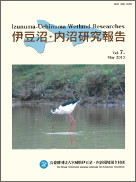Volume 7
Displaying 1-8 of 8 articles from this issue
- |<
- <
- 1
- >
- >|
-
2013 Volume 7 Pages 1-8
Published: 2013
Released on J-STAGE: November 10, 2017
Download PDF (498K) -
2013 Volume 7 Pages 9-15
Published: 2013
Released on J-STAGE: November 10, 2017
Download PDF (630K) -
2013 Volume 7 Pages 17-22
Published: 2013
Released on J-STAGE: November 10, 2017
Download PDF (602K) -
2013 Volume 7 Pages 23-37
Published: 2013
Released on J-STAGE: November 10, 2017
Download PDF (1063K) -
2013 Volume 7 Pages 39-45
Published: 2013
Released on J-STAGE: November 10, 2017
Download PDF (564K) -
2013 Volume 7 Pages 47-53
Published: 2013
Released on J-STAGE: November 10, 2017
Download PDF (686K) -
2013 Volume 7 Pages 55-58
Published: 2013
Released on J-STAGE: November 10, 2017
Download PDF (334K) -
2013 Volume 7 Pages 59-69
Published: 2013
Released on J-STAGE: November 10, 2017
Download PDF (904K)
- |<
- <
- 1
- >
- >|
